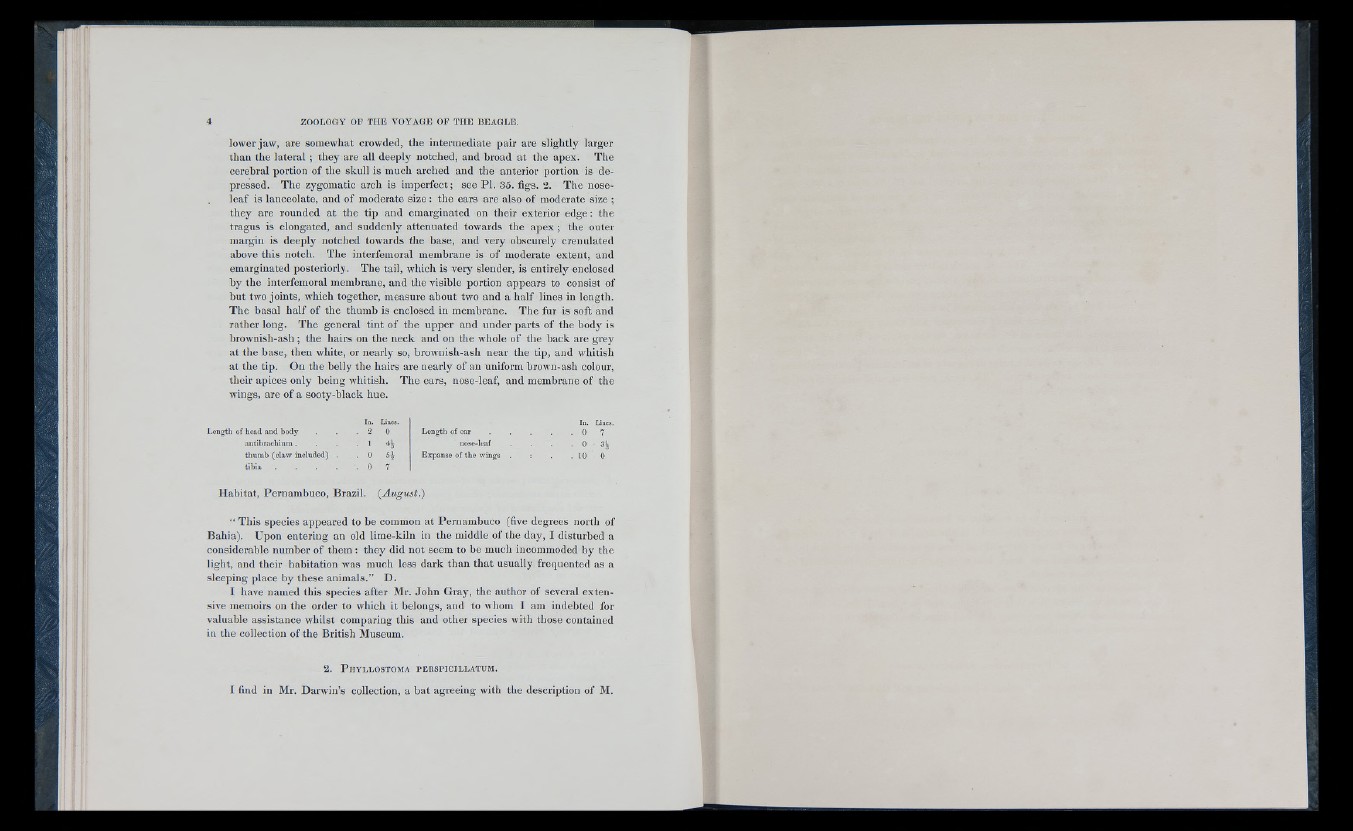
lower jaw, are somewhat crowded, the intermediate pair are slightly larger
than tlie lateral ; they are all deeply notched, and broad at the apex. The
cerebral portion of the skull is much arched and the anterior portion is depressed.
The zygomatic arch is imperfect; see PI. 35. figs. 2. The nose-
leaf is lanceolate, and of moderate size: the ears are also of moderate size ;
they are rounded at the tip and emarginated on their exterior edge: the
tragns is elongated, and suddenly attenuated towards the apex ; the outer
margin is deeply notched towards the base, and very obscurely creimlated
above this notch. The interfemoral membrane is of moderate extent, and
emarginated posteriorly. The tail, which is very slender, is entirely enclosed
by the interfemoral membrane, and the visible portion appears to consist of
but two joints, which together, measure about two and a half lines in length.
The basal half of the thumb is enclosed in membrane. The fur is soft and
rather long. The general tint of the upper and under parts of the body is
brownish-ash; the hairs on the neck and on the whole of the back are grey
at the base, then white, or nearly so, brownish-ash near the tip, and whitish
at the tip. On the belly the hairs are nearly of an uniform brown-ash colour,
their apices only being whitish. The ears, nose-leaf, and membrane of the
wings, are of a sooty-black hue.
Length of head and body
antibrachinm .
thumb (claw included)
tibia
2 0
1 H
00 7
Lengtli of ear
nose-leaf
Expanse of the wings
0 7 0 3^
10 0
Habitat, Pernambuco, Brazil. (August.)
“ Tliis species appeared to be common at Pernambuco (five degrees north of
Bahia). Upon entering an old lime-kiln in the middle of the day, I disturbed a
considerable number of them : they did not seem to be much incommoded by the
light, and their habitation was much less dark than that usually frequented as a
sleeping place by these animals.” D.
I have named this species after Mr. John Gray, the author of several extensive
memoirs on the order to which it belongs, and to whom I am indebted for
valuable assistance whilst comparing this and other species with those contained
in the collection of the British Museum.
2 . P h y l l o s t o m a p e r s p i c il l a t u m .
I find in Mr. Darwin’s collection, a bat agreeing with the description of M.